Maine, the northeastern gem of the United States, boasts a hunting tradition as deep as its forests. With its vast wilderness and diverse ecosystem, this state has been a haven for hunters for centuries. From the majestic moose to the elusive white-tailed deer, Maine bear hunting has always been abundant and productive.
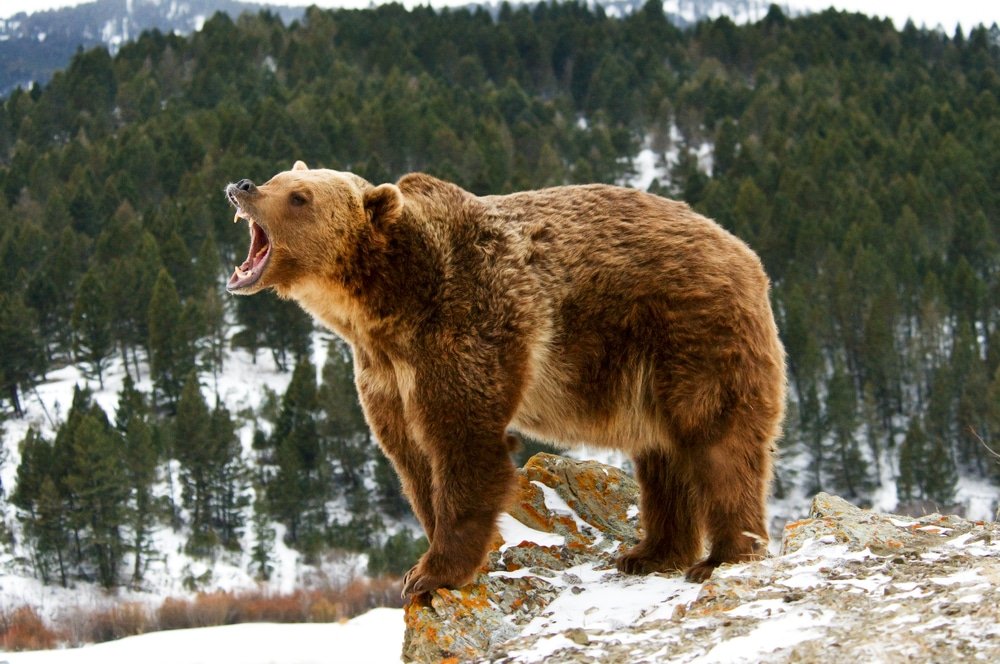
However, one creature captivates the imagination of seasoned hunters and novice enthusiasts: the American black bear. With its powerful presence and enigmatic nature, bear hunting in Maine offers an unparalleled adventure deeply rooted in the state’s hunting heritage.
Bear hunting for conservation and population management
Beyond being an exciting pursuit for outdoor enthusiasts, bear hunting is crucial in Maine conservation efforts and population management. The American black bear population has thrived in this region due to abundant food sources and suitable habitats.
However, without effective management measures, such a flourishing population could lead to ecological imbalances or increased human-wildlife conflicts.
Through regulated bear hunting seasons and carefully monitored quotas set by the Maine Department of Inland Fisheries & Wildlife (MDIFW), hunters maintain sustainable populations while ensuring harmony between humans and bears.
Bear hunting controls numbers and helps create a balanced ecosystem where all species can thrive. So let us embark on an exploration into the captivating world of Maine bear hunting.
In this realm, ancient traditions meet conservation principles with every step taken through dense forests and every heartbeat quickened by anticipation.
The American Black Bear: Maine’s Native Species
Maine is home to a thriving population of American black bears, the only bear species in the state. These majestic creatures are known for their glossy black fur, though some may have brown or cinnamon-colored coats.
Male bears, also called boars, can reach weights of up to 600 pounds, while females, known as sows, typically weigh between 200 and 400 pounds.
Their large size and muscular build make them formidable creatures in the wild. The American black bear is well-adapted to Maine’s diverse habitats, including forests, swamps, and even suburban areas.
They are highly intelligent animals with an acute sense of smell—seven times more powerful than that of dogs—which aids them in finding food sources such as berries, nuts, insects, and small mammals.
Despite their name suggesting solely black coloring, these bears can also exhibit white markings on their chest or snout. This unique characteristic further intrigues encounters with these magnificent creatures.
Factors Influencing Bear Population Growth
Several factors come into play when considering the growth and distribution of Maine’s bear population. One crucial factor is habitat availability and quality—bears require vast areas with ample food sources and suitable denning sites for reproduction and survival.
The state’s vast wilderness offers a variety of habitats that can sustain healthy bear populations. Another significant influence on population growth is hunting regulations implemented by the Department of Inland Fisheries & Wildlife (MDIFW).
Through careful management practices such as setting hunting quotas based on scientific research data gathered through surveys and monitoring efforts across different regions of the state—MDIFW ensures sustainable harvest levels that do not adversely impact bear populations.
Furthermore, environmental factors such as climate change can also affect bear populations by altering food availability or habitat suitability over time. Understanding these influences helps wildlife managers make informed decisions to maintain a healthy and balanced bear population in Maine.
So, whether you’re an aspiring bear hunter or simply an admirer of wildlife, developing a comprehensive understanding of Maine’s bear population is key to appreciating the importance of conservation efforts and ensuring the long-term survival of this iconic species in our beautiful state.
Regulations and Licensing for Bear Hunting in Maine
When it comes to bear hunting in the great state of Maine, you’ll find yourself immersed in a system that is not only designed to preserve wildlife but also to provide an enjoyable and responsible hunting experience.
The Maine Department of Inland Fisheries & Wildlife (MDIFW) is the governing body responsible for managing and regulating hunting activities, including bear hunting.
This esteemed department is dedicated to conserving Maine’s natural resources and ensuring sustainable wildlife populations for future generations. The MDIFW plays a significant role in setting guidelines, enforcing regulations, and researching bear populations in collaboration with other wildlife management agencies.
Their work involves monitoring bear densities, studying reproductive rates, and assessing potential impacts on other species within the ecosystem. This comprehensive approach helps maintain a balanced ecosystem while allowing the cherished bear hunting tradition to continue.
Explanation of licensing requirements (resident and non-resident)
Before embarking on your thrilling bear hunting expedition in Maine, it’s crucial to understand the licensing requirements set forth by the MDIFW.
These requirements ensure hunters know about safety measures, possess adequate skills to harvest bears and contribute ethically to conservation efforts. For residents of Maine, obtaining a bear hunting license involves proving residency through valid identification, such as a driver’s license or utility bill.
Bear licenses can be purchased online or at designated retail locations authorized by the MDIFW. The fees associated with these licenses go directly towards supporting wildlife management initiatives statewide.
Non-residents who wish to partake in this exciting adventure must also acquire their special permit through an application process completed online or via mail. Non-resident permits are limited in number each year and are typically issued through a lottery system due to high demand.
This approach ensures fair access to bear hunting opportunities while maintaining sustainable populations. It is worth noting that both residents and non-residents must comply with specific rules and regulations, such as bag limits, hunting seasons, and reporting requirements.
These guidelines are meticulously crafted to ensure the ethical treatment of bears and the preservation of Maine’s extraordinary biodiversity. By adhering to these licensing requirements set forth by the MDIFW, hunters can enjoy their pursuit while actively contributing to the long-term conservation and management of Maine’s cherished bear population.
Methods and Techniques for Bear Hunting in Maine
Spotlighting: Utilizing artificial light to locate bears at night
Spotlighting is a popular method used by bear hunters in Maine, especially during the early fall season. Armed with powerful spotlights, hunters venture into the wilderness after sunset.
The idea behind this technique is to catch the reflection of a bear’s eyes in the beam of light, revealing its presence. When the spotlight hits a pair of glowing eyes, it excites adrenaline.
This method requires a keen eye and patience, as bears can be elusive creatures.
Spotting those glowing eyes amidst the darkness adds an extra element of excitement to the hunt.
Baiting: Setting up bait stations to attract bears for a controlled hunt
Baiting is another commonly employed method in bear hunting across Maine. It involves setting up bait stations at strategic locations where bears are known to frequent.
These bait stations typically consist of natural food sources such as fruits, nuts, or even carcasses placed safely out of reach from other wildlife. Bears have an incredible sense of smell and can detect these enticing aromas from miles away.
By attracting bears to these designated spots using irresistible food sources, hunters can establish controlled hunting environments that allow for better accuracy and increased chances of success.
Stalking: Tracking bears on foot through their natural habitat
Stalking is perhaps one of the most challenging but rewarding techniques used by seasoned bear hunters in Maine. This method requires stealth, patience, and a deep understanding of bear behavior and habitat patterns.
Armed with appropriate gear like camouflage clothing and scent control products, hunters navigate through dense forests or open fields, silently tracking their prey’s movements without being detected.
Stalking tests one’s physical endurance and demands mental acuity to anticipate bear behavior accurately. It’s an exhilarating experience, as each step brings the hunter closer to these majestic creatures, creating an intimate connection with Maine’s natural environment.
In Maine, bear hunting offers a range of methods and techniques that cater to different preferences and skill sets. Whether one prefers the excitement of spotlighting, the controlled hunt of baiting, or the challenging pursuit of stalking on foot, each method provides a unique experience in pursuing bears amidst Maine’s breathtaking wilderness.
Tools and Gear Used in Bear Hunting
Firearms: Popular choices include rifles, shotguns, or muzzleloaders
Regarding bear hunting in Maine, firearms are the weapon of choice for many hunters. Rifles are particularly popular due to their accuracy and power.
Bolt-action rifles chambered in calibers like .30-06 Springfield or .300 Winchester Magnum are commonly used for their ability to deliver a lethal shot at a distance. On the other hand, shotguns offer versatility in close-range encounters where quick follow-up shots may be necessary.
Many hunters swear by 12-gauge shotguns loaded with slugs for maximum stopping power. Muzzleloaders, although requiring more effort to reload between shots, provide an added challenge and can be a rewarding option for those seeking a traditional hunting experience.
Archery Equipment: Compound bows or crossbows used by some hunters
Archery equipment is an excellent choice for those who prefer a more intimate hunting method. Compound bows have gained popularity among bear hunters due to their power and accuracy. With adjustable draw weights and modern advancements such as sights and stabilizers, compound bows offer precise shooting capabilities at various distances.
Crossbows are also utilized by hunters who may find them easier to handle and less physically demanding than traditional bows. Archery equipment requires excellent marksmanship skills, as bears have keen senses that make them wary of human presence.
Essential gear such as camouflage clothing, scent control products, and calls
When heading into the Maine wilderness for bear hunting, it’s crucial to equip oneself with essential gear that aids in stealth and luring bears within range. Camouflage clothing is essential for blending into the environment and remaining undetected by these intelligent animals with sharp eyesight.
Additionally, scent control products are vital in minimizing human odor, which bears can detect from miles away. Hunters often use scent-blocking sprays, soaps, and laundry detergents to neutralize odors and give them an edge in approaching undetected bears.
Calls, such as predator calls or bear-specific calls, can imitate the sounds of distressed prey or other bears to attract these elusive creatures within range. These tools and gear help create a favorable hunting environment that increases the chances of a successful encounter with a Maine black bear.
Safety Considerations for Bear Hunters in Maine
Wilderness Preparedness: Navigating the Great Outdoors
When venturing into the wilderness for a thrilling bear-hunting expedition in Maine, it’s crucial to be prepared. The vast and rugged terrain can be unforgiving, so proper navigation tools are essential. A trusty compass or GPS device will help you stay on track and avoid disorientation in dense forests.
Additionally, having a detailed map of the area is highly recommended. Remember to familiarize yourself with key landmarks and natural features to enhance your navigation skills.
First Aid Kits: Your Lifesaver in the Wilderness
Accidents happen, even to the most experienced hunters. Therefore, packing a comprehensive first aid kit is paramount for your safety during bear hunting expeditions. Ensure your kit includes bandages, gauze pads, antiseptic wipes, adhesive tape, pain relievers, tweezers, and scissors.
It’s also wise to carry any personal medications you may require in the field. Being equipped with a well-stocked first aid kit will provide peace of mind knowing you’re prepared to handle minor injuries or medical emergencies.
Guidelines on Firearm Safety: Respecting Your Weapon
Safety should always be paramount when handling firearms during any hunting activity. Before heading out on your bear hunting adventure in Maine, it is essential to review and adhere to firearm safety guidelines rigorously.
Please carefully familiarize yourself with how your firearm operates by reading its manual. Always practice proper muzzle control, your finger away from the trigger until ready to shoot.
Proper Handling and Storage Practices: Keeping Firearms Secure
When not actively using your firearm while bear hunting in Maine or traveling between locations, securely storing your firearm is crucial. Remember to unload your weapon and keep it in a locked case or gun safe during transportation.
At camp, use a gun or trigger lock to prevent unauthorized access. Proper storage ensures the safety of those around you and minimizes the risk of accidents or theft.
Bear hunting in Maine can be an exhilarating experience, but it’s crucial to prioritize safety throughout your expedition. By being well-prepared with navigation tools, carrying a comprehensive first aid kit, and adhering to strict firearm safety guidelines, you not only enhance the success of your hunt but also ensure the well-being of yourself and others in the great wilderness of Maine.
Bear Management Practices in MaineSustaining Harmonious Coexistence: MDIFW’s Commitment to Bear Populations
Maine is renowned for its picturesque landscapes and abundant wildlife, including the magnificent American black bear. To ensure the long-term survival of this iconic species, the Maine Department of Inland Fisheries & Wildlife (MDIFW) has implemented an array of practices designed to maintain sustainable bear populations.
These efforts are a testament to the state’s commitment to harmonious coexistence between humans and wildlife. Under MDIFW’s watchful eye, various scientific surveys are conducted regularly to assess bear population dynamics, demographics, and trends.
By monitoring factors such as reproduction rates, survival rates of cubs, and overall population size, accurate assessments can be made regarding the health of bear populations across the state.
This data-driven approach allows wildlife management officials to gain valuable insights into the status quo and make informed decisions regarding hunting regulations.
The Role of Hunting Quotas: Striking a Balance
Establishing hunting quotas is crucial to managing Maine’s bear population effectively. These quotas define the maximum number of bears legally harvested during a specific hunting season.
The purpose behind these limits is twofold: conserving bear populations while allowing responsible hunters to pursue their passion. Hunting quotas are determined based on comprehensive scientific research conducted by MDIFW biologists and their teams.
Factors such as habitat sustainability, food availability, reproductive success rates, and public safety concerns all play integral roles in establishing appropriate quotas for each designated hunting zone within the state.
By setting carefully calculated limits on harvest numbers, authorities can strike a delicate balance that ensures healthy bear populations for future generations while simultaneously catering to the needs of hunters who contribute positively to conservation efforts through licensing fees and support for habitat preservation.
Bag Limits & Hunting Seasons: Preserving Sustainability
In addition to hunting quotas, another crucial tool employed by MDIFW in bear management: is the implementation of bag limits and defined hunting seasons.
Bag limits refer to the maximum number of bears an individual hunter can legally harvest during a specific time frame, usually a hunting season.
This measure ensures that no individual hunter can excessively impact bear populations. Hunting seasons are carefully planned to coincide with periods when bears are most active and accessible, such as during their annual feeding frenzies or before hibernation.
These seasons are typically limited to specific timeframes each year to strike a balance between providing recreational opportunities for hunters and minimizing disturbances to bears’ natural behaviors.
By regulating both bag limits and hunting seasons, MDIFW ensures that responsible hunters have fair access to bear hunting opportunities while safeguarding sustainable population growth.
This comprehensive approach allows for preserving Maine’s cherished black bear population, ensuring their presence in the state’s wilderness for generations. MDIFW’s commitment to sustaining Maine’s black bear populations is evident through its scientific approach, implementation of hunting quotas, and careful regulation of bag limits and hunting seasons.
By striking a harmonious balance between human interests and wildlife conservation needs, Maine sets an example for other regions aiming to manage their bear populations effectively. Through these efforts, we can continue admiring these magnificent creatures while preserving the delicate ecological equilibrium they contribute to.
Tracking and Field Dressing Bears
Tips on tracking wounded bears using blood trails or other
Tracking wounded bears can be a thrilling yet challenging task for hunters. When a bear is hit with a well-placed shot, it may flee into the dense wilderness, making it essential to locate its trail.
One of the most effective methods is to look for blood trails. Following these crimson clues can lead you to the injured bear’s whereabouts.
As you track the blood, pay attention to the size of droplets, splatters, and any signs of disturbance in foliage or soil. Additionally, watch for broken branches or disturbed vegetation along potential escape routes.
Field dressing bears: Skinning and quartering
Once you’ve successfully tracked down your harvested bear, it’s time to begin field dressing – preparing the animal for transport and consumption. Skinning a bear requires precision and care.
Start by incision from the base of its throat towards its abdomen using a sharp knife. Gently peel back the hide while cutting away any connective tissues until you have fully removed it from one side of the animal.
Then, repeat this process on the other side until both sides are completely skinned. After skinning, quartering follows suit. To facilitate ease of transportation and minimize spoilage risk, divide the bear into manageable portions such as front shoulders, hindquarters, backstraps (loins), and cuts along joints where bones separate muscles.
Remember to clean out entrails during this process as well thoroughly.
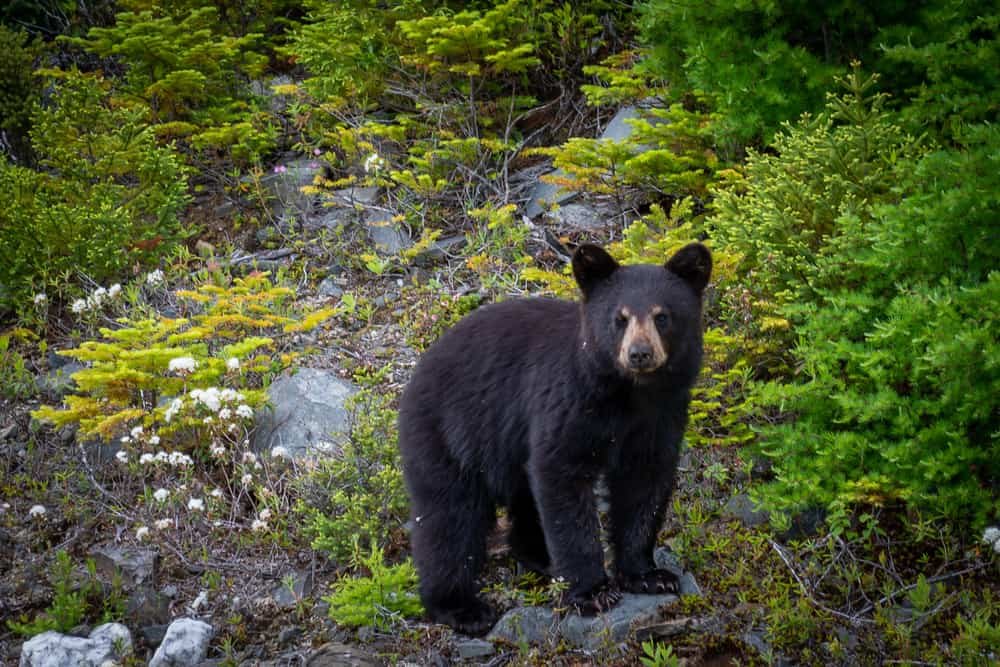
Conclusion
Maine bear hunting offers an exciting adventure and an opportunity for wildlife management and conservation efforts in this beautiful state. Tracking wounded bears with blood trails is both a skillful art and an adrenaline-pumping exercise that demands patience and keen observation skills.
Field dressing a harvested bear ensures that the animal’s meat can be utilized to its fullest potential while respecting and honoring the uniqueness of the hunting experience. By following regulations, using appropriate techniques, and embracing safety precautions, hunters can engage in this traditional sport responsibly.
Maine’s Department of Inland Fisheries & Wildlife plays a vital role in maintaining sustainable bear populations through careful management practices such as hunting quotas, bag limits, and controlled hunting seasons. So grab your gear, sharpen your instincts, and embark on a thrilling journey through Maine’s wilderness – where adventure awaits amidst the beauty of nature.

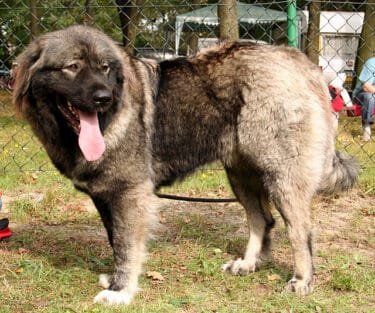

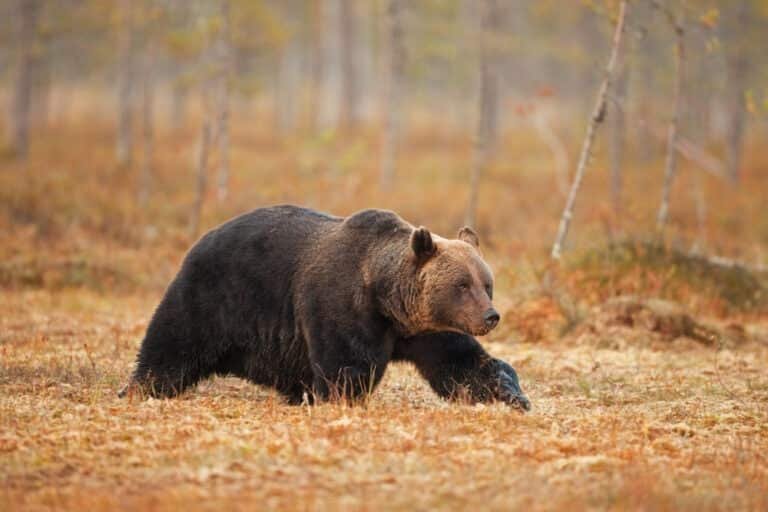

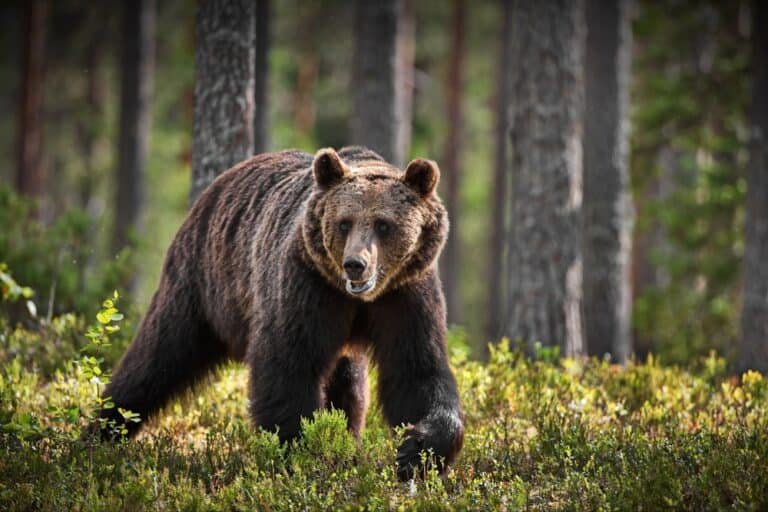
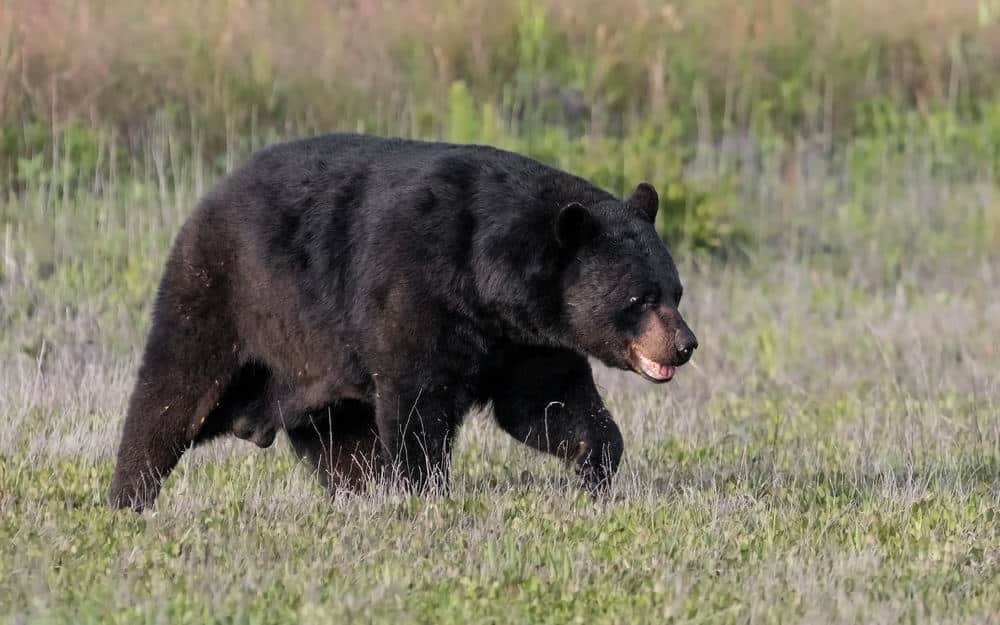
Your point of view caught my eye and was very interesting. Thanks. I have a question for you.
sugar defender reviews Discovering Sugar Defender has been a game-changer for me, as I have
actually always been vigilant concerning managing my blood sugar level degrees.
With this supplement, I really feel empowered to take charge of my health,
and my latest clinical exams have mirrored a significant turnaround.
Having a credible ally in my corner offers me with a complacency and reassurance, and
I’m deeply thankful for the profound distinction Sugar Protector has made in my health.
Hi! I could have sworn I’ve been to this blog before but after browsing through many of the articles I realized it’s new to me. Nonetheless, I’m certainly happy I discovered it and I’ll be book-marking it and checking back frequently.
I seriously love your blog.. Very nice colors & theme. Did you create this web site yourself? Please reply back as I’m looking to create my own website and want to learn where you got this from or exactly what the theme is called. Thanks.
Hi there! This blog post couldn’t be written much better! Looking through this post reminds me of my previous roommate! He constantly kept talking about this. I am going to send this article to him. Fairly certain he’ll have a very good read. I appreciate you for sharing!
Having read this I thought it was really enlightening. I appreciate you spending some time and effort to put this article together. I once again find myself spending way too much time both reading and commenting. But so what, it was still worth it.
Greetings! Very helpful advice in this particular post! It is the little changes which will make the greatest changes. Many thanks for sharing!
Can you be more specific about the content of your article? After reading it, I still have some doubts. Hope you can help me.
sugar defender reviews Finding Sugar Defender
has been a game-changer for me, as I’ve always been vigilant concerning
managing my blood glucose levels. I now really feel equipped and positive
in my ability to maintain healthy levels, and my latest medical examination have shown this
progression. Having a reliable supplement to complement my
a huge resource of comfort, and I’m truly thankful for the substantial difference Sugar Protector has actually made
in my general wellness.
Can I just say what a reduction to search out somebody who really is aware of what theyre speaking about on the internet. You undoubtedly know how one can carry an issue to light and make it important. Extra people must read this and perceive this aspect of the story. I cant imagine youre not more popular because you definitely have the gift.
Very good post. I will be dealing with a few of these issues as well..
Greetings, May I download your page image and make use of it on my own blog site?
You really make it seem so easy with your presentation but I find this topic to be really something that I think I would never understand. It seems too complex and extremely broad for me. I’m looking forward for your next post, I’ll try to get the hang of it!
Its astounding, seeking within the time and work you place into your weblog and detailed specifics you furnish. Ill bookmark your web site and pay a visit to it weekly for the new posts.
Hello! Wonderful post! Please when I could see a follow up!
Can I say that of a relief to uncover somebody that actually knows what theyre preaching about on the web. You actually realize how to bring a concern to light and make it crucial. Workout . should check this out and see why side in the story. I cant believe youre not more well-liked as you definitely develop the gift.
When I originally commented I clicked the -Notify me when new surveys are added- checkbox and after this if a comment is added I purchase four emails with the exact same comment. Can there be that is you can remove me from that service? Thanks!
An impressive share, I simply with all this onto a colleague who was simply doing little analysis on this. Anf the husband the truth is bought me breakfast because I came across it for him.. smile. So permit me to reword that: Thnx for any treat! But yeah Thnkx for spending some time to discuss this, I find myself strongly regarding it and adore reading more on this topic. If at all possible, as you grow expertise, can you mind updating your blog post with more details? It is actually extremely of great help for me. Big thumb up just for this writing!
Some genuinely interesting info , well written and loosely user pleasant.
Hi! I just would like to give a huge thumbs up for the great info you have here on this post. I will be coming back to your blog for more soon.
This is a topic that’s near to my heart… Take care! Where are your contact details though?
I like what you guys are up also. Such clever work and reporting! Carry on the excellent works guys I have incorporated you guys to my blogroll. I think it will improve the value of my website rentacar kosovo
I am an sweetheart of your respective web page. Safeguard up the beneficial work.
I like this web blog very much so much great information. “It’s a poor sort of memory that only works backward.” by Lewis Carroll.
thank you for this wonderful post, I am glad I observed this web site on yahoo.
I wanted to say Appreciate providing these details, youre doing a great job with the site…
self publishing is kind of difficult at first, but you can easily learn the tricks of the trade “
I would like to thank you for the efforts you’ve put in writing this website. I really hope to view the same high-grade blog posts by you later on as well. In fact, your creative writing abilities has encouraged me to get my own, personal site now 😉
It’s nearly impossible to find knowledgeable folks during this topic, nevertheless, you sound like you know what you’re discussing! Thanks
Wow, awesome blog layout! How long have you been blogging for? you made blogging look easy. The overall look of your web site is magnificent, let alone the content!